The Wallace Sword That Fought for Scottish Liberty
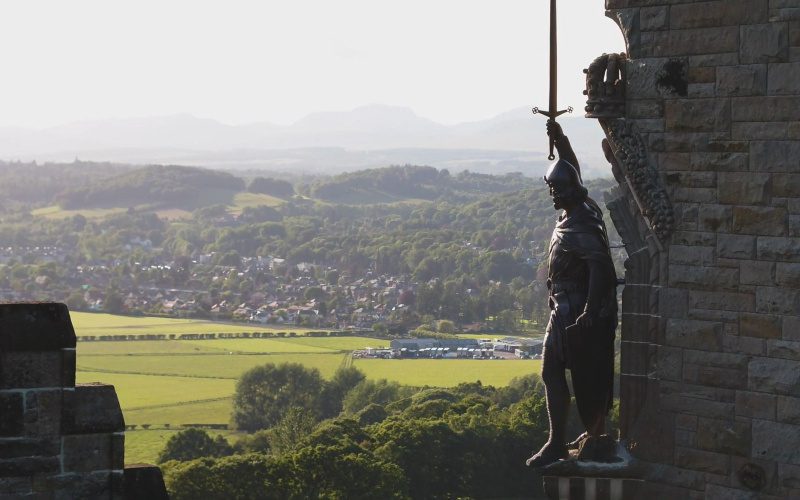
What’s in this article?
Sir William Wallace, the national highlander and legendary hero of Scotland who fought for Scottish independence from the British, is credited with using a two-handed sword known today as the Wallace Sword.
There is no doubt that the Scotsman used a medieval sword that might have been very large. However, some debate the historical accuracy and appearance of the Wallace Sword on display in the National Wallace Monument in Stirling, Scotland. This article will shed some light on the Wallace Sword and examine its characteristics, how it might have been used, and its history.
Who Was William Wallace?
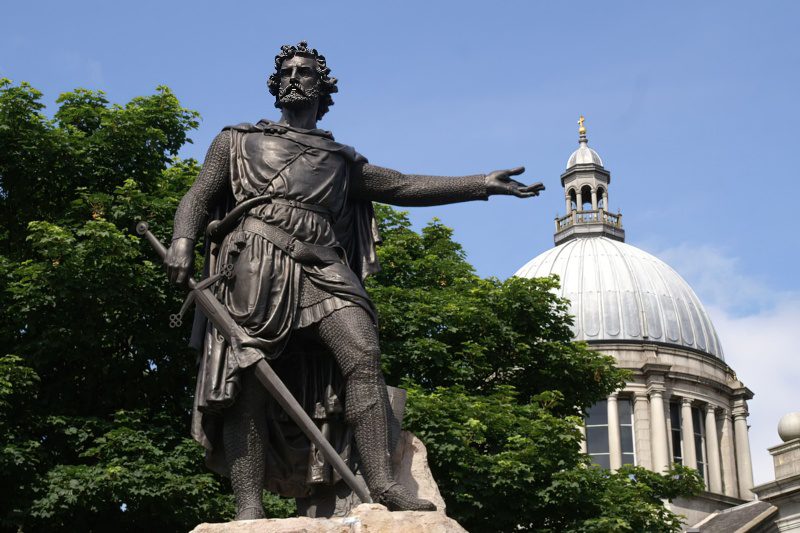
William Wallace (1270-1305) was a Scottish knight from a noble family that rose to prominence during the 13th century as a leader in the fight for Scottish independence. He is now widely recognized as a celebrated icon of Scottish identity. While he was a brilliant military leader, his great triumph at the Battle of Stirling Bridge (1297) was short-lived, as the Scots were defeated at the Battle of Falkirk (1298), which ultimately led to his death in 1305.
Today he is mostly known throughout the world thanks to actor Mel Gibson’s portrayal of him in the 1995 film Braveheart. While the film sported many historical inaccuracies, such as his blue face paint, his family background, and his scream for freedom, William Wallace is a significant historical figure known to possess a sword linked with folklore and legendary stories.
Characteristics of the Wallace Sword
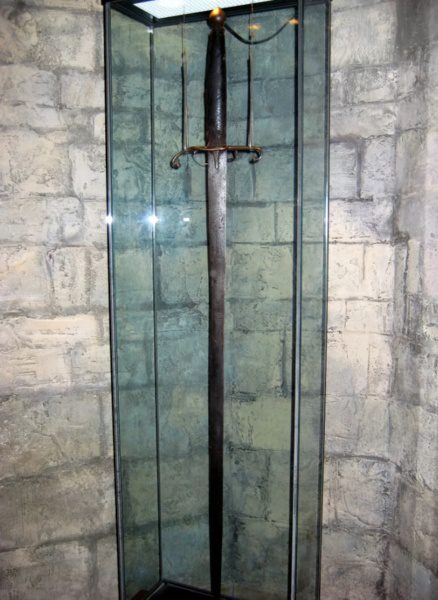
The sword presented in the Wallace Monument, believed to have been used by Sir Wallace himself, is a Scottish Claymore. It falls into the group of large two-handed highlander greatswords and has all the characteristics of one. This Wallace Sword is certainly different from the sword he used in the form that is presented today.
Blade
The Wallace Sword has a long blade that is both straight and double-edged. The blade tapers toward its tip, but its edge is rather blunt, making it an ideal candidate for a Claymore. The monument’s replica of Wallace’s Sword’s blade fuller is an addition that didn’t appear on the original weapon, as it came about much later in history.
The blade length of the Wallace Sword found in the monument in Stirling today is exactly 4 feet 4 inches (132 cm) long, and this is a much longer blade than what would have been used in 13th-century battle.
Guard
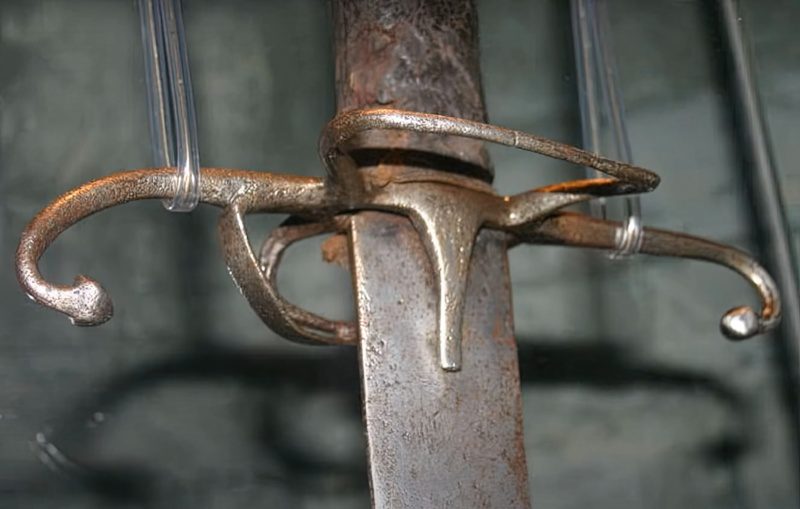
Sword guards like this one date to the Renaissance, much later than they would have been used (13th century) when they were first installed on the blade. It narrows toward the blade and is equipped with several quillons. A crucifix-shaped guard or a slimmer Viking or Carolingian narrowed guard may have originally guarded the handle.
The sword’s guard may have varied in different scenarios, such as the highland guard, which is completely narrowed, or the lowland type, which has only its quillons at the end to be narrowed.
Handle
The handle of the Wallace Sword, added to the original sword in the 16th century, is very long and made to be used with two hands. The original handle would have been straight and much shorter, looking like an Arming Sword or a Longsword.
Length

The Wallace Sword in the monument in Stirling has a very large length, a total of 5 feet 4 inches (163 cm) which places it into the two-handed sword category. It could be a Lowland Claymore or a German Zweihander, which are nothing like the Scottish weapons used during the time.
Weight
Since it is a large sword meant to be used in deadly hacking slashes, it also carries significant weight. The Wallace Sword in the Stirling museum is 5.95 pounds, making it a hard weapon to use in combat or carry around.
Use of the Wallace Sword
The Wallace Sword is a real sword used by Wallace himself, albeit much different from the replica in the Stirling museum today. The one displayed is a large two-handed sword that could be used for thrusting but is primarily for slashing attacks.
William Wallace was involved in a series of events that included much combat and warfare. Although he might have liked the bow and arrow, historical texts and his dynasty insignia tell us that the use of a sword was quite common in the 13th century.
His sword wouldn’t have been a 5-foot (150 cm) massive weapon that one might imagine was used for slashing down horses or hoards of enemies. Instead, the Wallace Sword was most likely combined with a shield and a typical-looking European-style sword of the period.
History of the Wallace Sword
William Wallace, the hero and freedom warrior of Scotland is said to have battled for his people with the Wallace Sword and paved the path for Robert the Bruce to bring independence to Scotland after his death in 1305. It is also said to have been used in both the Battle of Stirling Bridge (1297) and Falkirk (1298).
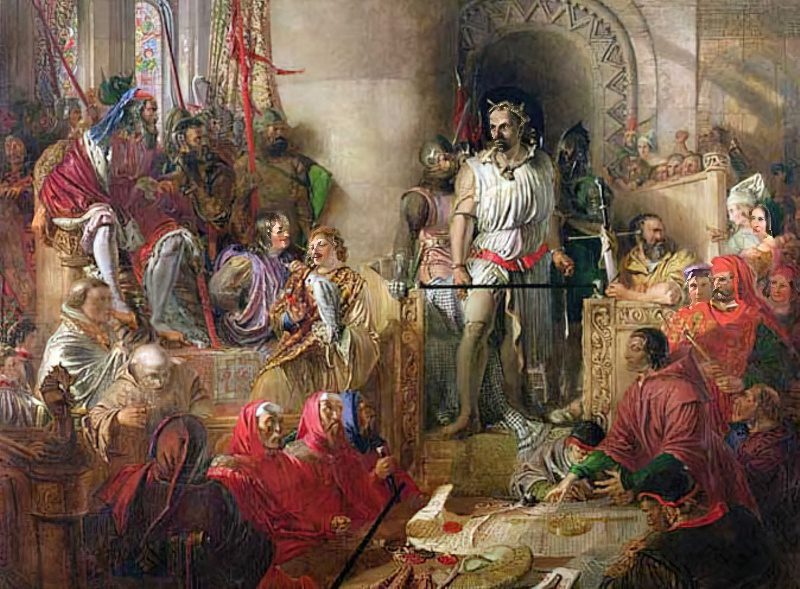
After Wallace’s gruesome execution of being hanged and then drawn and quartered, his sword is said to have remained in Dumbarton Castle near Glasgow, where Wallace himself was kept prisoner. We only then see in documents of the early 16th century that the sword underwent massive changes to the hilt and the blade, which was made of different parts of steel.
The Wallace Sword is of great significance to the people of Scotland. The legends and folklore surrounding Wallace and his sword date back to the 13th century, and later Blind Harry’s 15th-century poem raises these legends and Wallace’s influence even higher.
In the 19th century, when the Wallace Monument was being constructed, there was a strong need for and difficulty locating relics to honor Scottland’s national hero, hence the use of the Wallace sword in the monument today.
Authentic Debate
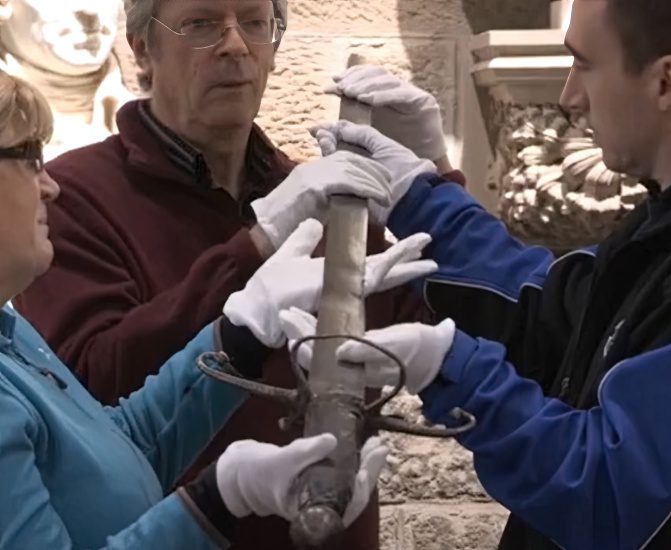
The Wallace Sword presented in the monuments, statues, and modern media today is a 16th-century sword. In 1505, we know King James IV of Scotland asked for a new hilt, scabbard, pommel, and sword mountings to be repaired or replaced. He ordered that a new scabbard be constructed and wrapped in cords of silk, replacing the original, which was made from the dried skin of Hugh de Cressingham.
In this document, however, nothing is said about the blade of the Wallace Sword, and it could well be the one used by Wallace himself. However, a very good reason the blade is not in its true form is that it’s made from three pieces of metal that have been skillfully welded together to make a much larger blade.
It is still possible that the blade in the Wallace Monument contains a small piece of steel from Wallace’s authentic 13th-century blade, although it is not certain and could have easily belonged to a member of his army.
Did William Wallace have a Massive Two-Handed Sword?

Claymores, or claidheamh-mòr, which translates to greatswords, were very popular throughout Scotland in the 16th and 17th centuries. During Wallace’s time in the late 13th century, Claymores wouldn’t have been used, nor would the large two-handed swords, which are extremely dubious.
That is why it can be said that William Wallace almost certainly did not have a massive two-handed sword, Claymore, or Zweihander, as is wrongly depicted in modern media and statues or monuments. The only use of large swords at the time in Scotland were Bearing Swords (ceremonial swords for procession).
There is a 0.01% chance that Wallace might have used a massive two-handed sword, such as the 13th-century Longsword or Bastard Sword, which started appearing in illustrations of the period and could have been made significantly larger for effect.
Conclusion
Today, Scots all around the world consider William Wallace’s sword to be a symbol of their nation. The one on display at the Wallace Monument in Stirling today is a “Ship to Theseus” (so many elements have been added that affect the original). However, the sword is still immensely popular, just like the Joyeuse of Charlemagne, the Sword of Joan of Arc, and the Sword of El Cid.




